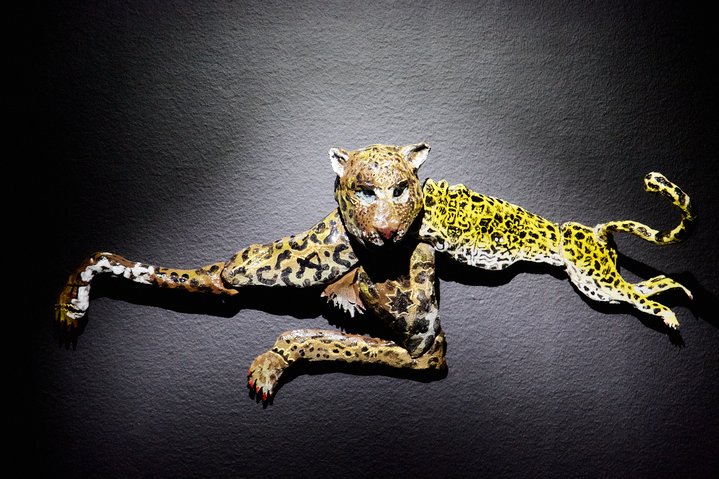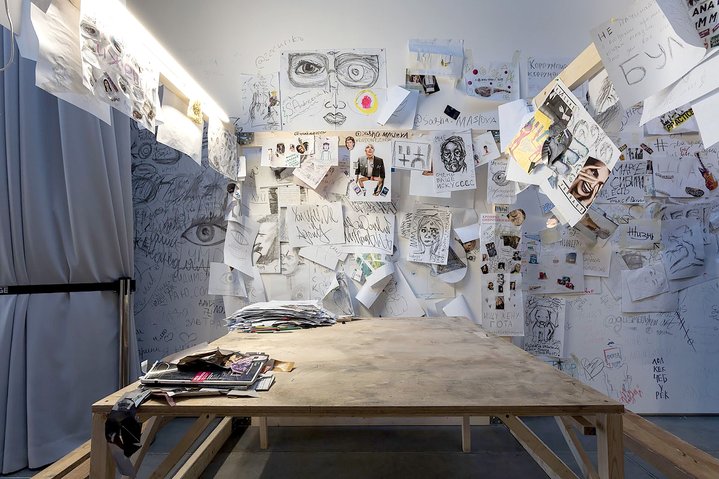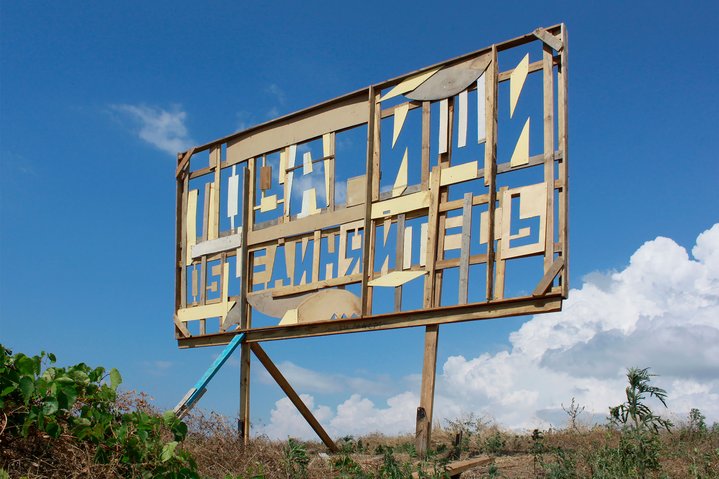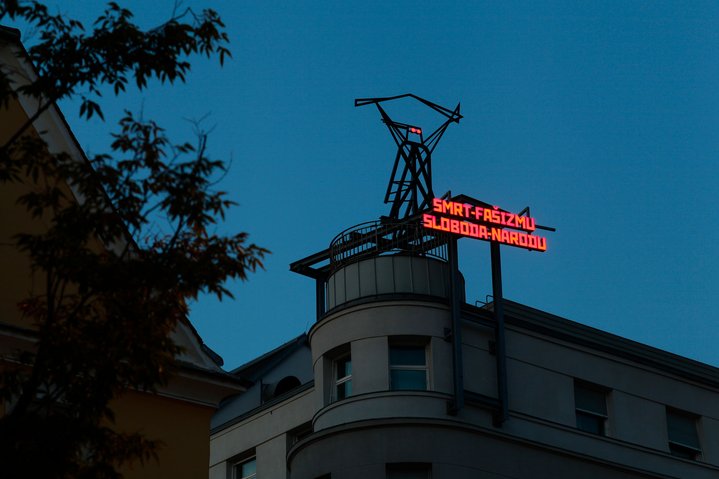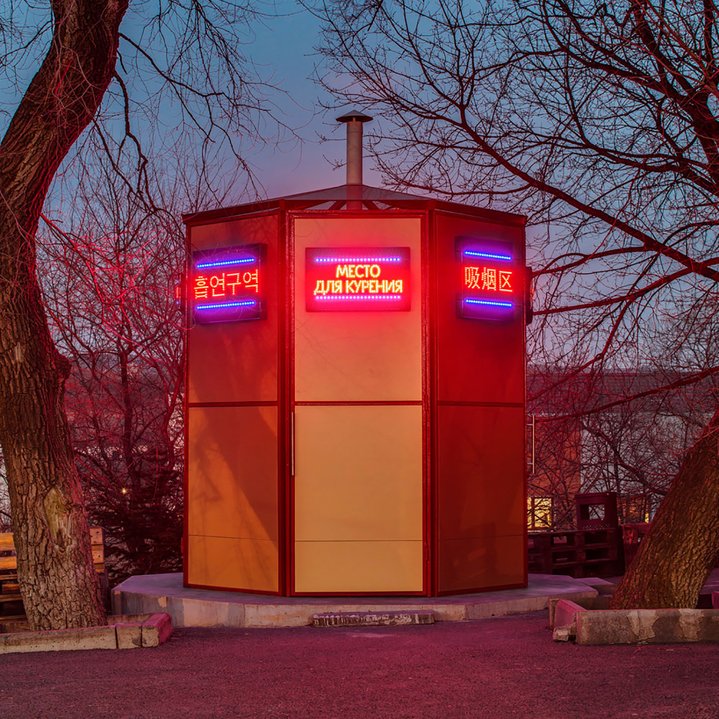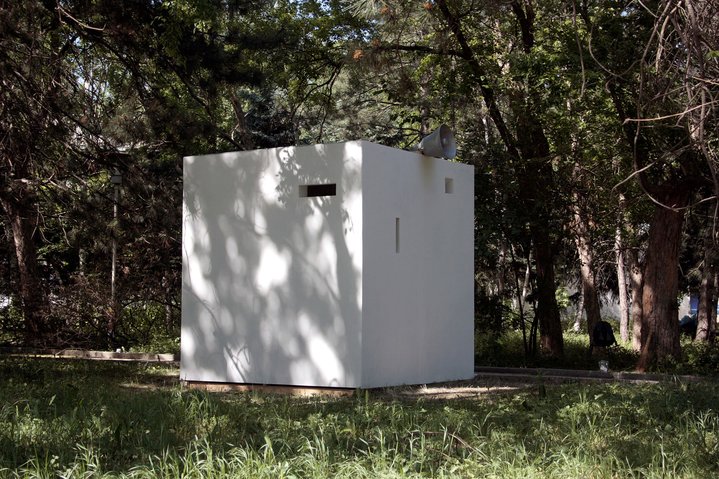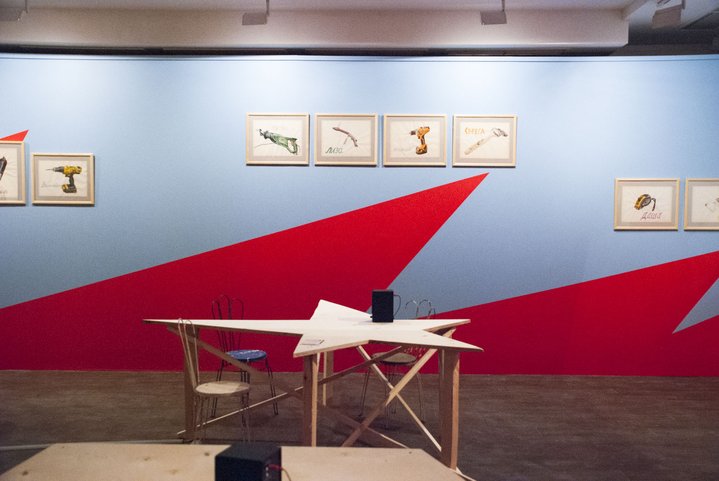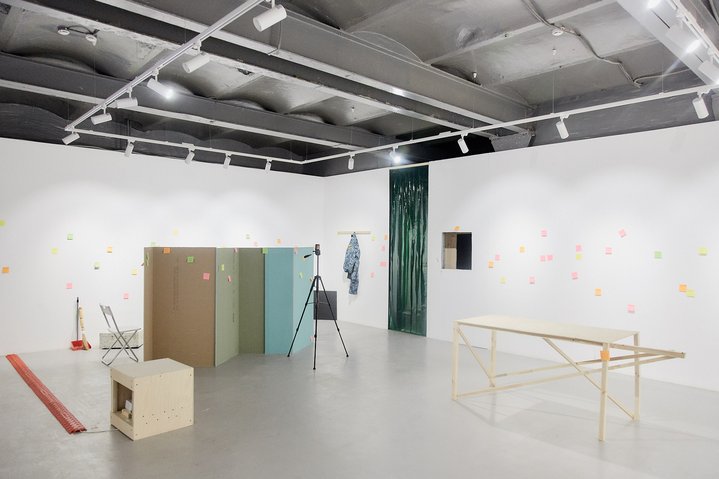Zipping into the future
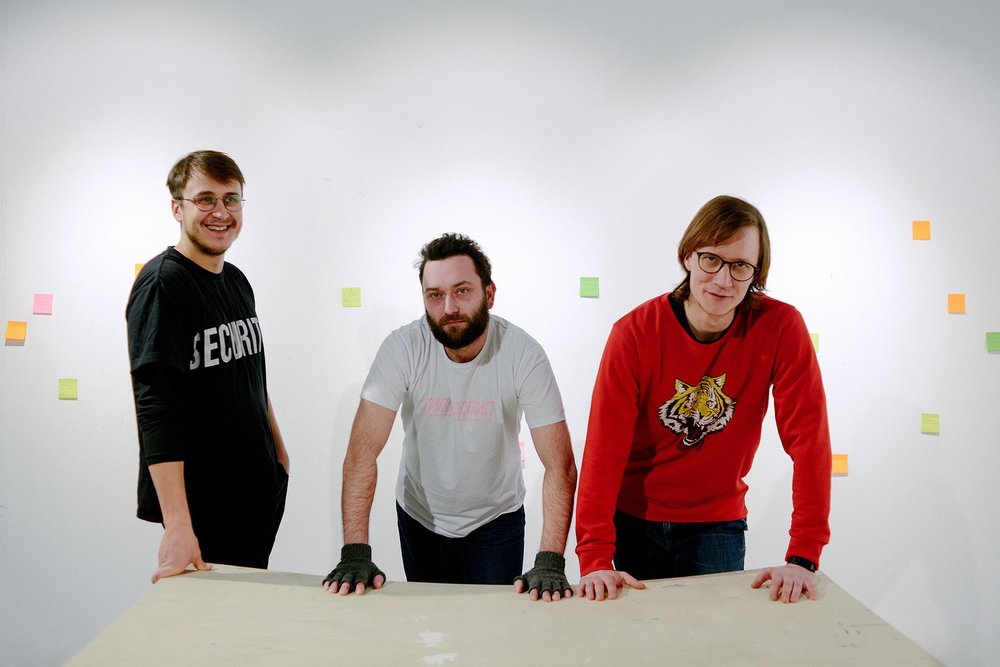
A rendezvous with ZIP, a young art collective from Krasnodar, which has managed to single-handedly put its hometown on the global contemporary art map.
It was bright afternoon in late February and I was en-route to ‘Tipografia’, a contemporary art centre in Krasnodar. My mission was to meet the ZIP Group, a artist collective comprised of Evgeny Rimkevich (b. 1987) and brothers Stepan and Vasily Subbotin (born in 1987 and 1991 respectively), who helped open the centre’s brand new space. Tipografia is located in the former canteen of the Zavod Izmeritelnykh Priborov, a now defunct measuring instruments factory whose acronym ‘ZIP’ is also the group’s namesake. I found Stepan kneeling on the ground, repairing a doorknob at the centre’s entrance. “We wear a lot of hats,” he explained.
After fixing the doorknob, Stepan joined the other ZIPers in Tipografia’s library and co-working space, where they were preparing a lesson on collective art-making. The group founded the Krasnodar Institute for Contemporary Art nine years ago and they are actively involved in its growing art and curatorial programme. This year, enrollment doubled from 15 to 30 students.
The ZIP group is one of the most active and prolific collectives working in Russia today. As just an afternoon with them revealed, their practice is part think-tank, part educational initiatives and part experimental workshop. Their mission has begun to inspire self-organized art initiatives not only in Krasnodar, but also in other regions of Russia. Stepan attributes their approach in part to how they view the role of art and artists in Russia today. “Here, things are not laid out for you. Artists inevitably have to assume multiple roles.”
The demand for their work is growing. A forthcoming ZIP exhibition at Moscow’s prestigious XL gallery is planned, coronavirus permitting, as well as an Autumn show at Karlsruhe’s ZKM museum of modern art. However, they naturally also have their detractors. In one episode in 2014, ZIP member Eldar Ganeyev was arrested after rolling on to a public square in ZIP’s home town Krasnodar in a plywood box. He was eventually released, but the box was only returned a year later, after undergoing tests on whether it might have been a terrorist weapon.
The collective formed organically in 2009, when it’s members found affordable studio space at the ZIP factory. “We thought about doing a group exhibition at a local institution, but the waiting time for approval would have been over six months. Since a small community was beginning to form at the factory anyway, we decided to begin organizing events and showing our work there,” Stepan explained.
Both he and Vasily still vividly recall what it felt like to be in that first space. “There were Soviet posters on the walls, instruments and machines all round. Everything was trashed, but it felt as if the workers had just left.” Their first project, ‘Living Corner’ (2009), recalls the reading corners in Soviet cultural centres intended to enlighten workers. ZIP made a board game based on a map of the factory; players had to follow the paths of collective work that ZIP had reinvented for them.
This historical sensibility lies at the heart of the group’s entire practice. It explains their fascination with local cultural history, alternative forms of social existence and collective art produced by many different hands, a production system that dissolves singular authorship. ZIP’s current project ‘Techno-Peasants’ (‘Technokrestyanie’), re-imagines the Kuban region’s forgotten “techno-peasant” collective farms. The plywood “peasant cottage” combines a DIY assembly aesthetic with bright geometries painted on the sides, mythologizing Soviet history so as to rewrite it on the group’s own terms.
To some extent, the tension in their work between the Soviet past and contemporary Russia is also deeply personal. All members of the ZIP Group grew up near Krasnodar city, in a culturally conservative agrarian region. They came of age in the late 1990s and early 2000s, when, as Vasily says: “We could imagine going to New York and we were fascinated by the goings-on in Moscow… as if there wasn’t a border.” But the brothers also recalled Soviet forms of socialization from their childhood, a sense of collectivity that they want to maintain. As Stepan explained, “We were taught all about the construction of tractors because, as men, we were supposed to become traktoristy (tractor drivers). Girls learned something deemed gender-appropriate. But we all learned how to harvest tomatoes.”
ZIP Group hopes to continue navigating the difficult path of working on the margins of society, without actually being marginal. Many works announce this desire to stake claims and create new subjects. All the while, their works remain supple, mobile and responsive to changing realities. Their project ‘Civil Resistance District’ (2012-15) entailed designing temporary structures to transform a simple protest into an organized civil uprising. Like many of their works, this one has the aesthetic of spontaneity. According to Stepan, “We are doing well in Krasnodar. Ironically, although we are now located further from the (centre of the) city, we can actually complete more projects about the city.”






